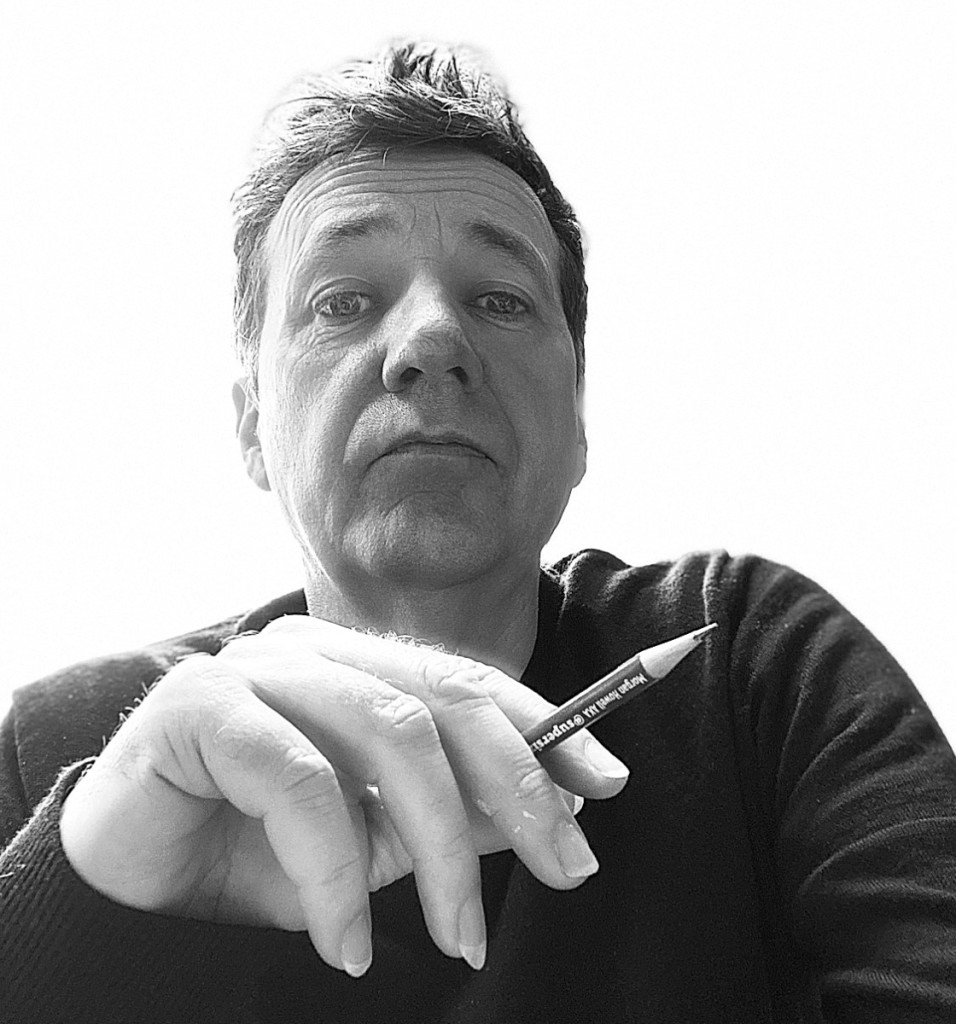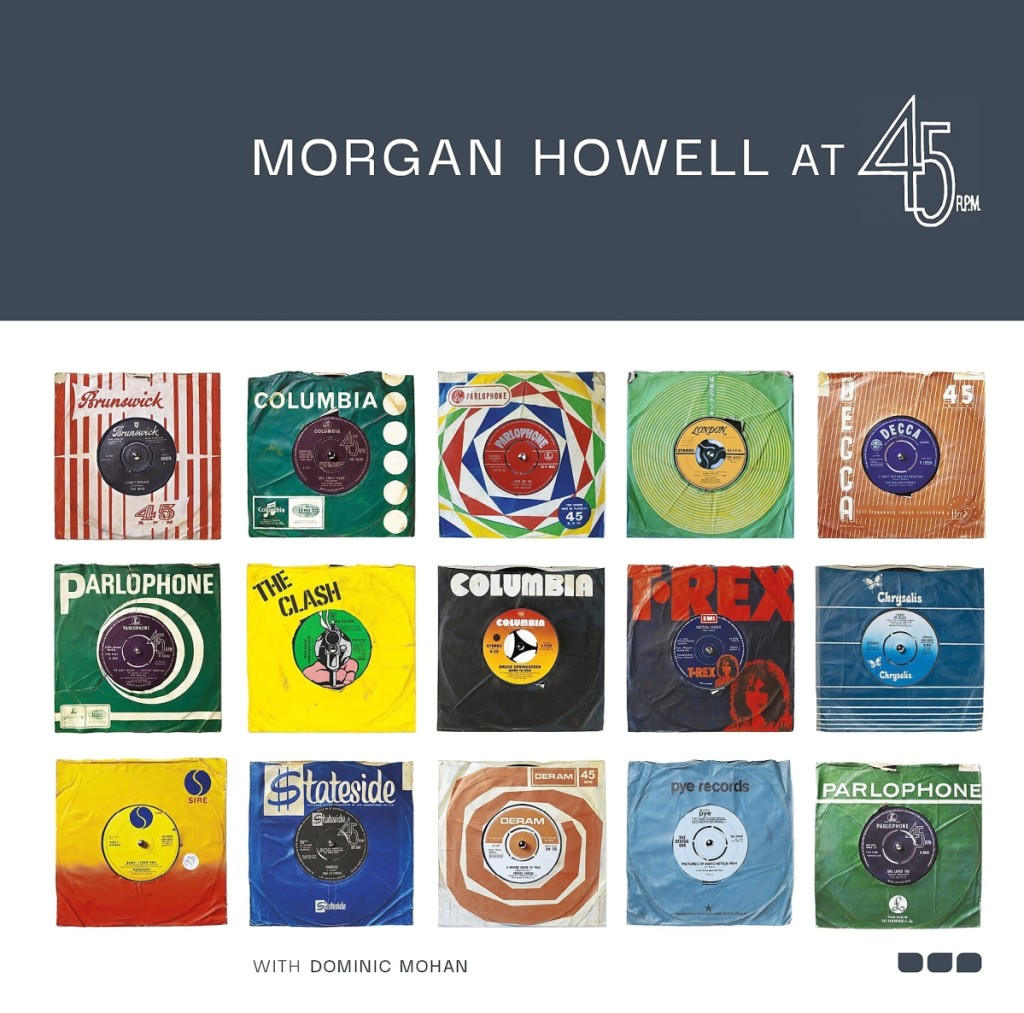British artist Morgan Howell recreates large scale versions of iconic record covers, then shrinks them down to the original size of a 7-inch single. These are the subject of a new book, recently published by Black Dog Press, titled Morgan Howell at 45rpm. We reached out to Howell for his spin on what inspired them, and why they have such broad appeal.
What was the inspiration for these works?
I guess I was really driven to be recognized by London’s Royal Academy. It was a brief that I had issued to myself, many years ago. That was very important to me. It would legitimize what I do and mean my work had purpose and was respected. So, I tried submitting to the Royal Academy’s Summer Exhibition a number of times but failed – then l realized it was all about having the killer idea and concept.
I was trying to leave my high-pressured role in an advertising agency. Art was an escape for me. Ultimately, l was looking for an exit from the whole business, but just needed that one light bulb moment. So, I asked myself – what makes me the adult that I am? Why do I dress the way I do and listen to this music and have this haircut? I was searching for ‘the real me,’ to quote The Who. I was thinking about being a child and of my sisters, who are six years and ten years older than me. I remember 1978 and I’m 14 years old and Quadrophenia has just come out; the Two Tone label and The Specials swept across the country in a weekend, and we all became Mods. Or rockers. I was a Mod. I remember trying on my dad’s Barker shoes and turning my tie around at school. I was listening to The Who a lot – my sister said ‘Why don’t you have a listen to some of my old singles?’ and she gave me a beautiful plastic record box and inside were all the Stax and Tamla Motown singles, the Small Faces and The Yardbirds, Manfred Mann.
All these fantastic songs that I had never heard before. You had to seek them out – they weren’t played on the radio anymore. I remembered that it gave this skinny, spotty kid knowledge. The next week at school I was the boy who knew about the Small Faces. That gives you a power, a knowledge and credence – and that swagger and confidence has never left me.
What happened next?
Having that illicit inside track on music and knowing about these cool, Mod singles was a turning point in my young life. The boys I thought were cool didn’t even know anything about this stuff. So, fast forward to 2009, I was standing in my old kitchen – less spotty but still pretty skinny – and l will never forget that pivotal moment, a lightning bolt that would change my life forever. Music means everything to me, and I was always buying vinyl, seven-inch singles, playing guitars, so why don’t I paint giant 3D singles, just like I did with that old Eagle annual? Eureka!
The whole thing downloaded in my head, like a computer program. These objects were so important in my life, and I wanted to recreate and interpret them. I knew that millions of other people on this planet felt the same about these songs and how they were packaged. I immediately told myself that l would only ever paint a single once – so, in that way, it would be more valuable. It was all in my head within seconds. I quickly went onto Google to see if anyone else was doing the same. Fortunately, they were not. As soon as I had this concept, I knew this would pay for the rest of my life.
ln 2018, my painting of The Beatles’ “Yesterday” on the American Capitol label was accepted by the Royal Academy, where it hung alongside works by Banksy, David Hockney and Tracey Emin.
What was the first one you did?
In the first instance, to test the concept, I found a copy of The Beatles’ single, “Please Please Me” and scanned both sides and gave it to a local sign maker who I still use. I asked them to print them out on canvas but massive – one meter by one meter (one yard by one yard). And they made me a giant single from Foamex which I then slipped in the bag. It was a colossal object made from scans – it was my prototype, but I realized it was too big, so from then on I made them smaller. I ended up giving it to a friend.
The first that I hand painted from scratch was “House Of The Rising Sun,” by The Animals on Columbia.
Why did you decide to make a book of these?
Over the past ten years I’ve met some amazing people with some incredibly touching stories. Along with a fair few of my heroes. We thought it would be fun to put them together in one place. I never get to see my work all together at the same time and it helped us through lockdown for sure. I don’t think we’d have gotten access to as many great people otherwise. We were all bored.
I can imagine some of these might appeal to the musicians whose singles you’ve reproduced – has that happened?
Yes indeed, many times. Lord Lloyd Webber, Ozzy Osbourne, Neil Diamond, actor Jude Law, film director Edgar Wright, and bands like Blur, The Kinks and The Stone Roses, Elvis Costello, Fatboy Slim, Johnny Marr. Very few buy their own singles though. Who wants to be surrounded by their own work?
Does the book feature covers released in both the US and UK?
Yes, it does. I can’t think of many places in the world where the hit single didn’t reach. There’s a Japanese pressing of “Gimme Shelter” by The Stones, and the Prince piece, “When Doves Cry” is an Australian pressing.
[Editor’s note: To purchase Howell’s book, https://www.blackdogonline.com/product/morgan-howell-at-45rpm/]
-Madelia Hickman Ring






